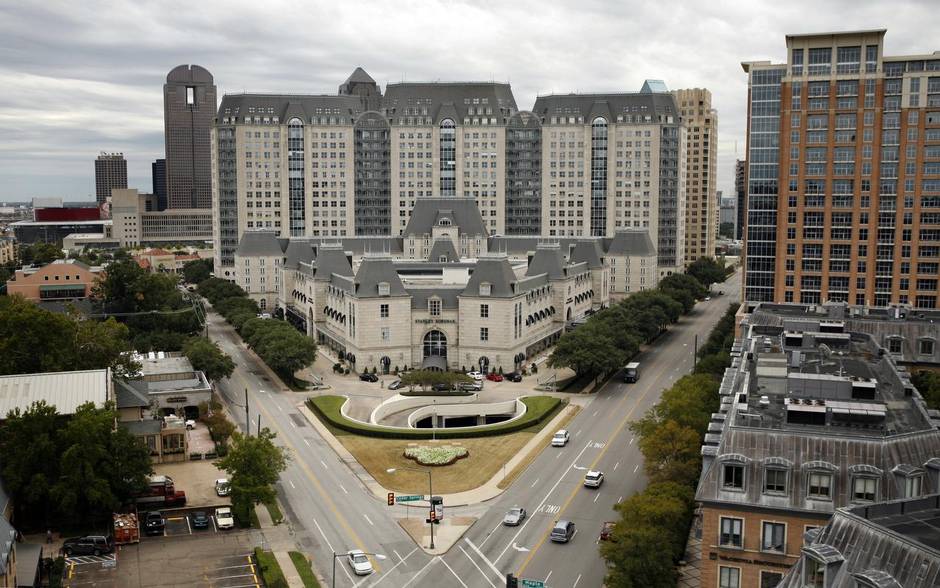Image may be NSFW.
Clik here to view.
From the top of the Rosewood Crescent complex you get a stunning view of Dallas’ downtown.
But it’s the forest of towers that surround the Uptown landmark that really catch the eye.
New residential high-rises, office towers and luxury hotels line the streets surrounding the Crescent. And $1 billion in new projects are on the way.
The view was much different 30 years ago when the Crescent opened its door.
In the spring of 1986 when the Crescent held its grand opening party, the area now called Uptown was a hodge-podge of car lots, Mexican restaurants and run-down housing.
Today, it’s the most expensive patch of real estate in North Texas.
The Crescent gets a lot of credit for making Uptown into the current boomtown.
The landmark office, hotel and retail complex impacted the north side of downtown Dallas the way Rockefeller Center helped shape Midtown Manhattan.
The Crescent focused new attention on an area folks once just drove through in a hurry on their way to someplace else — the Park Cities or the entry to the Dallas North Tollway.
It started the migration of major downtown office tenants north of Woodall Rogers Freeway.
And the Crescent set the quality bar for other Uptown developments that would follow in the coming decades.
The Crescent has turned out of be one of Dallas’ best big ideas.
Back in the 1970s and into the 1980s real estate boom, Dallas developers tried to outdo themselves with plans for larger and grander projects.
Everything from shopping malls on Main Street to 100-story skyscrapers wound up on the drawing boards.
Most of those grand projects would not make it past pretty pictures in real estate company offices.
Even the big developments that survived to a groundbreaking often failed to continue beyond an initial construction phase.
What gave the Crescent its clout was it all happened at once — three office towers, a luxury hotel and shopping constructed in a single phase.
At an estimated $400 million in cost, the Crescent is one of the most expensive property developments ever to hit the streets in Dallas.
Today it’s hard to imagine it not being Uptown’s anchor.
But when plans for the development debuted, skeptics were ready to shoot the Crescent down.
No way downtown Dallas’ big businesses would trade their skyscraper digs on Main Street for a new office block that far north, some leasing agents reasoned.
The financial backing of Dallas’ Caroline Hunt family and the post-modern design by architectural icon Philip Johnson proved the naysayers wrong.
“This is architecture that will give you a kick in the street,” Johnson said when the Crescent was unveiled with its miles of carved Indiana limestone and ornate wrought iron trim.
Even the people who weren’t fans of the frou-frou French inspired design couldn’t deny the quality of the Crescent.
It’s one of the reasons the Crescent still has some of the highest rents in town — close to $50 a foot for office space.
To keep the property competitive with the newest generation Uptown buildings, Crescent owner J.P. Morgan Asset Management and operator Crescent Real Estate are spending $65 million to tart up the property with new landscaping, interior upgrades and additional retail.
The redo should keep the Crescent looking sharp for the next 30 years.
Article courtesy of Dallas Morning News:
http://www.dallasnews.com/business/columnists/steve-brown/20160512-steve-brown-credit-the-30-year-old-crescent-for-uptown-s-upscale-upbringing.ece
The post Credit the 30-year-old Crescent for Uptown’s Upscale Upbringing appeared first on Clay Stapp+CO.